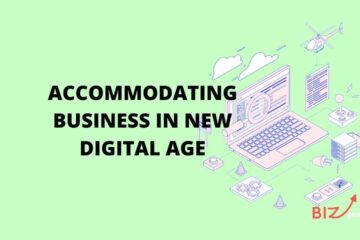Hiring someone is a tedious and time-consuming task. The hiring process takes a lot of effort to select the right candidate from a large pool of numerous talented individuals. But the hiring process does not end with sending out an offer letter to the prospective employee. After selecting an employee, it is overriding that you follow up with a good onboarding process.
A good onboarding process will ensure that the new employee is properly assimilated with the culture and the processes of the company. It will also ensure that better understanding between the new employee and the employer. In this article, we will cover every point related to the onboarding process that will help you to amalgamate your new employee with your organization.
What is onboarding?
Onboarding is a process that involves familiarizing a new employee with the company culture, policies and with his or her role. It also involves getting done with important papers works such as insurance, employment agreement leaving terms and an ID.
Through the onboarding process, an employee becomes aware of what is expected of them in terms of skills, responsibilities and attitude. It allows an employee to get familiar with his work environment, colleagues and daily routine.
For an employer, onboarding provides him or her with a better look into the new employee’s personality. It allows an employer to bond with the employee and develops an open conversational relationship with him/her. Thus, a good onboarding process is of utmost importance.
What to do after hiring someone
After you have hired the right candidate for a specific role in your organization, follow the following steps to assimilate him or her with his/or her work.
Engage with the new employee before the first day
There is usually a waiting period between the acceptance of your offer by the candidate and his or her first day at work. During this time, there is a hint of both nervousness and excitement within the recruit. He or she is often worried about the first day and ends up imagining scenarios that may be way off what it would really look like.
Hence, it is important that you stay in touch with the fresh recruit during this gap. Phone calls are always preferable as they would break the ice and bring out open conversations between the employee and you or the HR. Keep on informing the new recruit about what they need to keep in mind in order to get them ready for the first day. Also discuss with him/her, the important paper works that need to complete.
Keep the workplace ready for the first day
When the new recruit walks into the office for the first day, he or she must find every necessary tool ready for work. Make sure that you provide him/her with the following items:
· Work e-mail id
· A computer
· An ID
· Insurance papers
· Employee agreement
· Company handbook
· Terms & conditions
Also, consider writing a welcome note in order to make him/her feel at home.
Welcome the new recruit
On the first day at the office, the new recruit must experience a heartwarming welcome from his/her co-workers. More than a welcome note, you should consider decorating his/her cubicle or presenting him/her with a bouquet of flowers. This will give rise to positive feelings within the employee. He or she will feel less nervous and more comfortable in the new workspace. This will also boost his/her confidence and keep up his/her excitement level for a longer time.
Introduce the new recruit to the team
It goes unsaid that as an employee, you are supposed to introduce your new recruit to the team he/she will be working with and vice-versa. You can consider arranging a lunch over which the new employee and the existing team members can bond. A lunch will create an informal and relaxed atmosphere and help the new employee to connect with the team better.
A good rapport is a necessity among the members of a team as a lack of coordination among team members can lead to wastage of time and faulty tasks. Therefore, make sure that the new employee goes along with the team well and is able to blend in properly.
Discuss the job
Though you had already specified the employee about the job during the hiring process, it is advisable to go through it once again. Provide the new employee with an overview of his/her role and list down their responsibilities. Ask them if they are comfortable with those responsibilities and be open enough to make changes if needed.
Also, go through their perks and salary structure once again to make sure there is no confusion. You should also consider giving the new employee a tour of the workplace.
Training and orientation
Orientation is a crucial part of the onboarding process. Orientation gives the new employee an idea about the company culture. It gives him or her an insight into how things are carried out in the organization. If the employee has previously worked in some other firm, then orientation allows him/her to unlearn the previous processes of work and get used to the existing work culture.
Training is important to get the employee ready to overcome any difficulty with his/her work in the future. Training allows the recruit to become knowledgeable about any problems that he or she might have to face and how to tackle them. Therefore, it is important to spend the first few months of the recruit in training so that he or she would not need to depend on anyone else in the face of roadblocks.
Ask for feedback
Throughout the training process, the recruit should be asked to provide feedback about his or her role. Whether he/she understands the role or not? Whether he/she is comfortable in the role or not? These questions are crucial in ensuring that the recruit is productive. These questions will allow you to make changes accordingly to meet the employee’s needs so that he or she can work freely.
Asking for feedback will also develop good communication between you or the HR and the employee. Over time, the employee will be free to communicate with you/ the HR whenever needed. This will ensure a continuous workflow.
Follow up
During the first few weeks, it is indispensable that you keep a check on how the new employee is assimilating into his or her role. Schedule frequent meetings with him/her and carefully investigate his/her work. These meetings will give you an idea about the employee’s capabilities. You will also be able to understand the workflow of the new hire.
You must also let the employee know what you make of his or her work. He or she must know if he/or she is doing a good job. This will keep them motivated to continue with their good performance. And if their work is not up to the mark, suggest what changes he or she needs to make his/her work to ensure optimal productivity.
Importance of an onboarding process
An effective onboarding process is beneficial for both the employee and the company. These benefits are listed below:
Increases employee retention
A good onboarding process will produce positive impressions about the company among employees. They would feel comfortable in the working atmosphere and understand the vision of the organization. As a result, they will want to continue working in the company for a longer period of time.
Hiring talented and skilled employees is an expensive process. Therefore, once hired, you would want the employees to keep contributing to your company as finding a suitable replacement within a short time will be really tough.
Enhances company branding
Onboarding creates the first image of an organization inside an employee’s mind. It decides if an employee will enjoy working in the company or not and whether he or she will be able to understand the vision of the company. If the onboarding process succeeds in making the employee realize the vision of the company, then he or she will take pride in his or her role in the company.
He/she will spread the word about his/her good experience in the company within his/her circles. This will increase the branding of your company and will attract more prospective employees.
Increases employee satisfaction
A good onboarding process will lead to employees understanding their tasks and responsibilities well. It will let employees have a clear idea about their role and what is expected of them. This will allow them to do their work without any confusion.
As such, employees would be satisfied with what they do. They will have a clear understanding of their jobs and will give their best to achieve the company goals.
Enhances productivity
When employees are not confused with their work, they will be able to make meaningful contributions to the company. They would feel motivated by the onboarding process to contribute to the best of their capabilities. They would also be able to communicate with different people in their workspace better.
They will know exactly what to do if they run into problems and tackle them quickly. They will be properly trained for their roles. As such, the overall productivity of the employees would increase.
These are the reasons why a good onboarding process is important.
Conclusion
When you hire an employee after an expensive and tough recruitment process, you expect him or her to deliver according to your needs. For this to happen, the employee must be willing to give his/her best and provide optimal performance. This is only possible when you provide the new hire with the necessary means to showcase his/her capabilities to the fullest.
This is what makes an onboarding process so important. It allows the employee to make full use of his/her skills. It assimilates him/her with the organization and provides him/her with a working atmosphere in which he/she feels comfortable.
In this article, we talked about the steps that ensure a successful onboarding process and about its importance. I hope this article was useful and will help you to amalgamate your new hires in your company.
Resources to Learn More
Wikipedia: https://en.wikipedia.org/wiki/Onboarding




